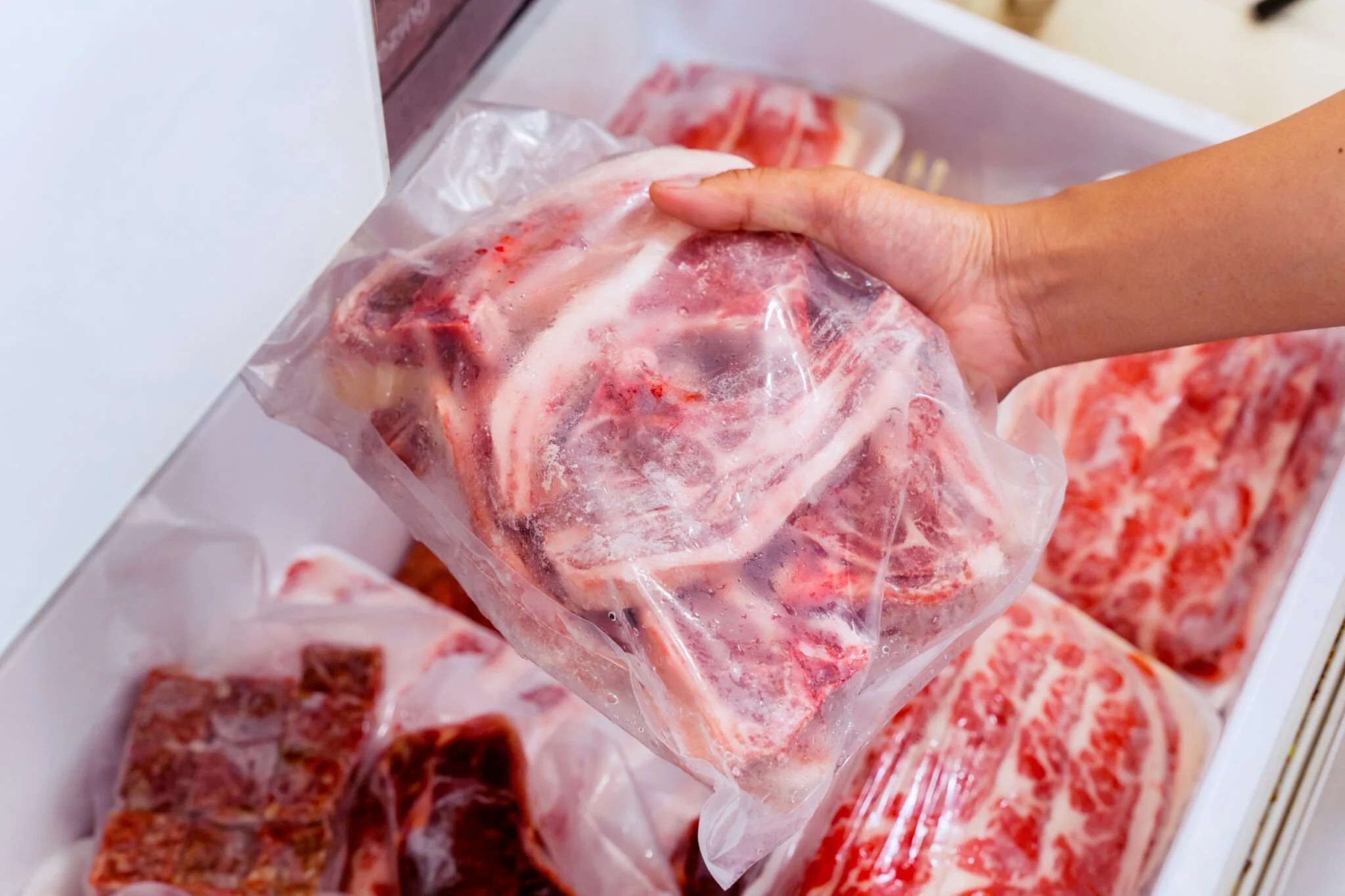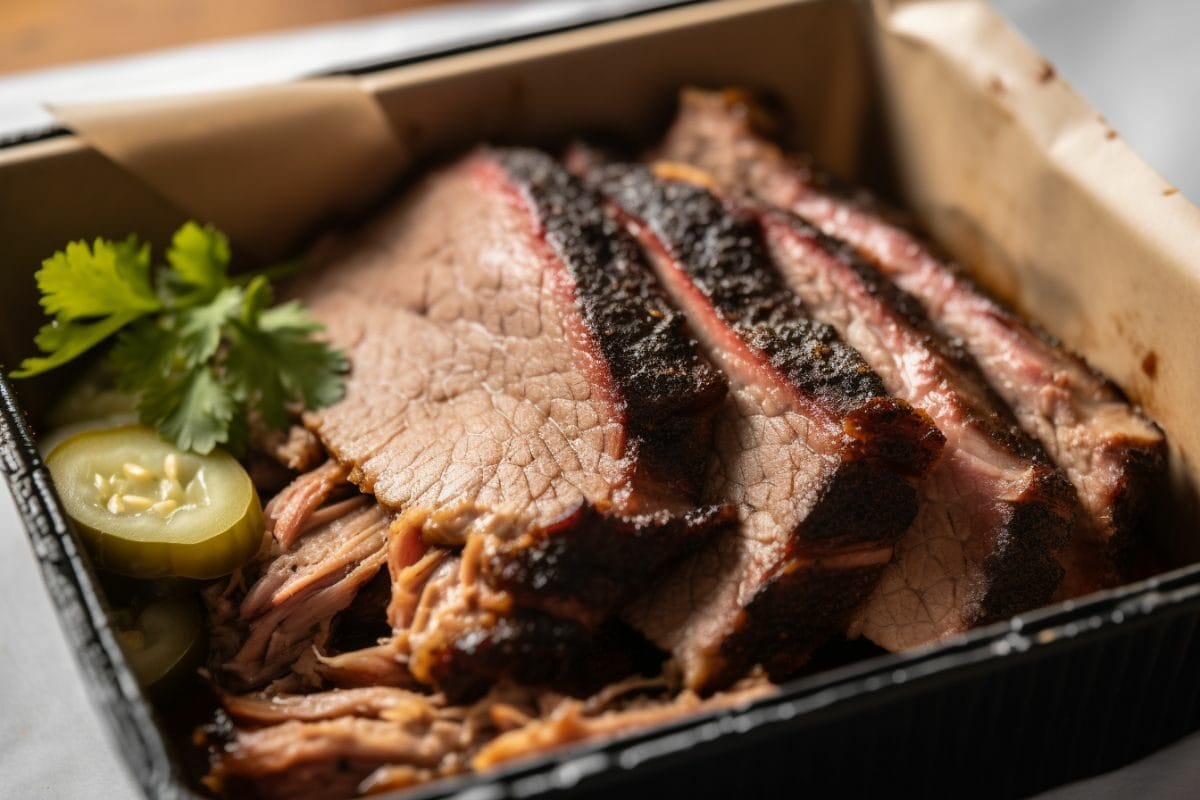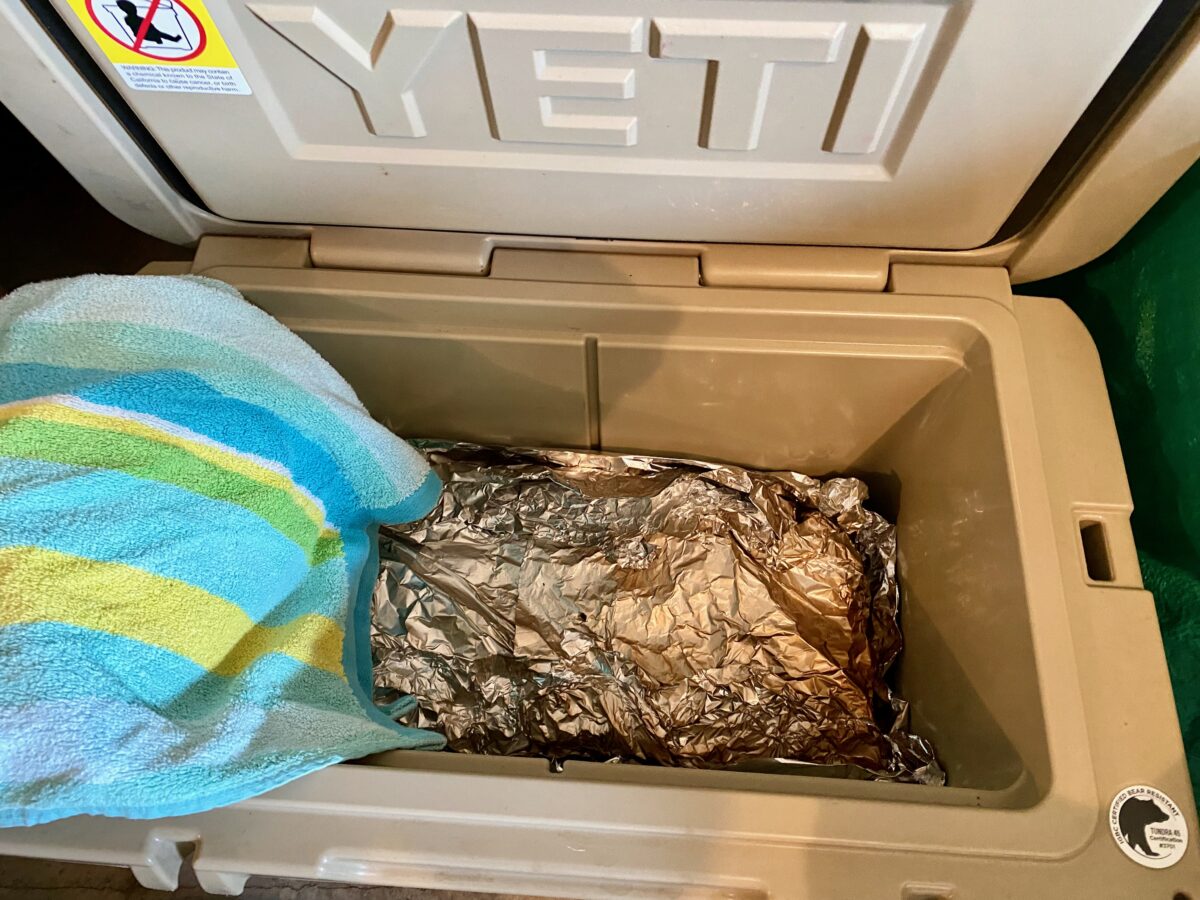

Articles
How To Store Deli Meat
Modified: January 6, 2024
Learn how to properly store deli meat in this informative article. Get tips and tricks for maximizing freshness and minimizing waste.
(Many of the links in this article redirect to a specific reviewed product. Your purchase of these products through affiliate links helps to generate commission for Storables.com, at no extra cost. Learn more)
Introduction
Welcome to the wonderful world of deli meats! Whether you’re a fan of turkey, ham, roast beef, or salami, deli meats are a versatile and convenient addition to any sandwich, salad, or charcuterie board. However, proper storage is crucial to maintain the taste, freshness, and safety of these delicious meats.
In this article, we will explore the best practices for storing deli meat to ensure it remains flavorful, safe to eat, and free from spoilage. We’ll discuss the importance of finding the right storage containers, offer tips for refrigerator and freezer storage, emphasize proper handling and hygiene, explore labeling and organizing methods, and highlight common mistakes to avoid.
So, whether you’re buying deli meat in bulk or simply want to make sure your sandwiches stay fresh throughout the week, read on to discover the secrets of successful deli meat storage!
Key Takeaways:
- Properly storing deli meat is crucial for maintaining flavor and safety. From temperature control to labeling and hygiene, following best practices ensures delicious, fresh deli meat for all your culinary creations.
- Avoid common mistakes like improper wrapping and overlooking spoilage signs to ensure your deli meat stays safe and flavorful. With proper storage techniques, enjoy the convenience of high-quality deli meat whenever you desire.
Read more: How To Store Deli Meat In Fridge
Best Practices for Storing Deli Meat
Proper storage is key to maintaining the quality and safety of deli meat. Here are some best practices to follow:
1. Purchase Fresh Meat: Start with fresh deli meat from a reputable source. Check the expiration date and ensure that the meat is properly sliced and handled.
2. Wrap it Properly: If your deli meat comes in plastic packaging, keep it in its original wrapping. If not, transfer it to airtight containers or resealable bags. This will prevent the meat from drying out and keep it protected from contaminants.
3. Temperature Control: Keep deli meat refrigerated at a temperature below 40°F (4°C). This ensures that bacteria growth is slowed down, reducing the risk of spoilage. If you don’t plan to consume the meat within a few days, consider freezing it for long-term storage.
4. Separate from Other Foods: Store deli meat separately from other foods, especially raw meats, to avoid cross-contamination. Place it on a separate shelf or in a sealed drawer to prevent any drips or spills from contaminating other items in your refrigerator.
5. Follow the FIFO Method: FIFO stands for “first in, first out.” When you purchase new deli meat, place it behind the older ones in your refrigerator. This way, you will ensure that the older meat is used first, minimizing any chance of spoilage.
6. Regularly Check for Spoilage: Check your deli meat for any signs of spoilage, such as an off smell, slimy texture, or discoloration. If you notice any of these signs, it’s best to discard the meat to prevent foodborne illnesses.
7. Don’t Slice in Advance: It’s best to slice deli meat as you need it, rather than in advance. This helps maintain its freshness and prevents it from drying out quickly.
8. Avoid Contaminating Utensils: When handling deli meat, use clean utensils and cutting boards to avoid cross-contamination. Wash your hands before and after handling the meat to minimize the risk of spreading bacteria.
9. Keep it Optimal: Avoid overpacking your refrigerator with deli meat as it can hinder proper air circulation, leading to uneven cooling and potential spoilage. Instead, leave some space for air to circulate around the meat.
By following these best practices, you can extend the shelf life of your deli meat and ensure that it remains safe and delicious for you to enjoy.
Finding the Right Storage Containers
Choosing the right storage containers for your deli meat is essential for maintaining freshness and preventing spoilage. Here are some tips to help you find the perfect containers:
1. Airtight and BPA-free: Look for containers that are airtight to prevent air exposure and moisture from affecting the quality of the deli meat. Additionally, opt for BPA-free containers to ensure the safety of your food.
2. Size Matters: Consider the size of the container based on your needs. Smaller containers are ideal for individual portions, while larger containers are great for storing larger quantities of deli meat.
3. Transparent: Choose containers that are transparent or have clear lids. This allows you to easily identify the contents without having to open each container.
4. Stackable: Opt for stackable containers to maximize space in your refrigerator or freezer. This feature helps keep your storage area organized and efficient.
5. Easy to Clean: Look for containers that are dishwasher safe or easy to clean by hand. This will make your life easier when it comes to cleaning up after storing deli meat.
6. Durable: Select containers that are made from durable materials such as glass or high-quality plastic. This ensures that the containers can withstand frequent use and prevent any leaks or spills.
7. Compartmentalized: Consider using compartmentalized containers if you want to store different types of deli meat separately. This helps maintain the flavors and prevents cross-contamination.
8. Freezer Safe: If you plan to store deli meat in the freezer for an extended period, make sure the containers are freezer safe. Freezer-safe containers are designed to withstand low temperatures and prevent freezer burn.
9. Label-Friendly: Find containers that allow for easy labeling. Properly labeling your deli meat containers with the date of storage will help you keep track of its freshness and ensure that you use the oldest meat first.
Remember, investing in quality storage containers will not only keep your deli meat fresh and delicious but also make your storage process more efficient and organized. Consider these factors when choosing your storage containers to ensure the best results.
Refrigerator Storage Tips
Properly storing deli meat in the refrigerator is essential for maintaining its freshness and quality. Follow these tips to ensure optimal refrigerator storage:
1. Store in the Coldest Part: Place your deli meat in the coldest part of the refrigerator, usually the back or bottom shelf. This area maintains a consistently low temperature, keeping the meat fresh for a longer period.
2. Use a Refrigerator Thermometer: Keep a refrigerator thermometer inside your fridge to monitor the temperature accurately. The ideal temperature for storing deli meat is below 40°F (4°C).
3. Keep It Sealed: Once opened, reseal the original packaging tightly or transfer the deli meat to an airtight container or resealable bag. This prevents air exposure and helps maintain moisture, preventing the meat from drying out.
4. Separate from Raw Meats: To avoid cross-contamination, store deli meat separately from raw meats. Place it on a different shelf or in a sealed drawer to prevent any potential drips or spills from contaminating other foods.
5. Avoid Overcrowding: Do not overcrowd your refrigerator with too many items, as it hinders proper air circulation. Allow enough space around the deli meat for air to circulate and maintain an even temperature.
6. Regularly Check for Spoilage: Check your deli meat regularly for any signs of spoilage, such as an off smell, slimy texture, or discoloration. If you notice any of these signs, discard the meat immediately.
7. Use Within 3-5 Days: Consume deli meat within 3-5 days of opening the package. After this time, the quality and safety may begin to deteriorate, increasing the risk of foodborne illness.
8. Slice as Needed: Slice deli meat as you need it, rather than slicing it all at once. This helps maintain its freshness and prevents it from drying out quickly.
9. Keep Away from Strong Odors: Odorous foods, such as onions and garlic, can transfer their flavors to deli meat. Store deli meat away from strong-smelling items to avoid any unwanted flavor transfer.
10. Position in the Fridge: Place deli meat on a flat surface or a shallow dish to catch any potential drips or juices. This prevents any cross-contamination with other foods.
By following these refrigerator storage tips, you can ensure that your deli meat stays fresh, safe to consume, and full of flavor until it’s time to enjoy.
Freezer Storage Tips
Freezing deli meat is a great way to extend its shelf life and ensure you always have a supply on hand. However, proper freezer storage techniques are crucial to maintain the quality and taste of the meat. Follow these tips for optimal freezer storage:
1. Wrap it Properly: Wrap deli meat tightly in plastic wrap or aluminum foil to prevent freezer burn. Freezer burn occurs when air comes into contact with the meat, causing it to dry out and develop off-flavors.
2. Use Freezer Bags: Consider using freezer bags instead of regular plastic bags. Freezer bags are thicker and more durable, providing better protection against freezer burn.
3. Divide into Portions: If you have a large quantity of deli meat, divide it into smaller portions before freezing. This allows you to thaw only what you need, preventing waste.
4. Label and Date: Label each package with the type of deli meat and the date of freezing. This helps you keep track of how long the meat has been in the freezer and ensure that you use the oldest portions first.
5. Store in a Flat Position: Lay the wrapped deli meat flat in the freezer to save space and allow for efficient thawing. Once frozen, you can stack the packages for better organization.
6. Freeze at 0°F (-18°C) or lower: Set your freezer temperature at 0°F or lower to ensure that the deli meat remains frozen and safe to consume.
7. Use within 3-4 Months: Deli meat can be stored in the freezer for up to 3-4 months without a significant decline in quality. After this time, the flavor and texture may deteriorate.
8. Thaw Properly: When you’re ready to use the frozen deli meat, thaw it in the refrigerator overnight. Slow thawing in the fridge helps preserve the moisture and texture of the meat.
9. Avoid Re-Freezing: Once deli meat is thawed, do not refreeze it unless it has been cooked. Refreezing can lead to a loss of quality and increase the risk of bacterial growth.
10. Trim Excess Fat: If your deli meat has a layer of excess fat, consider trimming it off before freezing. This reduces the risk of rancidity and helps keep the meat’s flavor intact.
By following these freezer storage tips, you can maximize the shelf life of your deli meat and ensure it remains fresh, flavorful, and safe to eat for an extended period of time. Enjoy the convenience of always having deli meat at your fingertips!
Store deli meat in an airtight container or resealable plastic bag to prevent it from drying out. It should be kept in the refrigerator at a temperature of 40°F or below and used within 3-5 days for best quality.
Read more: How To Store Ribs
Proper Handling and Hygiene
Proper handling and hygiene practices are essential when it comes to safely storing deli meat. By following these guidelines, you can minimize the risk of foodborne illnesses and ensure the quality of your deli meat:
1. Wash Hands Thoroughly: Before handling deli meat, wash your hands with soap and warm water for at least 20 seconds. This helps remove any potential bacteria or contaminants from your hands.
2. Use Clean Utensils: Ensure that all utensils, cutting boards, and surfaces used for handling deli meat are clean and free from any residue from previous use. Use hot, soapy water to clean them before and after each use.
3. Avoid Cross-Contamination: Prevent cross-contamination by using separate utensils and cutting boards for raw meats and deli meats. This reduces the risk of transferring harmful bacteria from one food to another.
4. Keep Surfaces Clean: Clean and disinfect surfaces, such as countertops and cutting boards, with a food-safe sanitizer after preparing deli meat to prevent the growth of bacteria.
5. Don’t Leave Meat at Room Temperature: Avoid leaving deli meat at room temperature for more than 2 hours. Bacteria multiply rapidly in the “danger zone” between 40°F (4°C) and 140°F (60°C).
6. Use Gloves: If you prefer, you can wear disposable gloves when handling deli meat to minimize direct contact. Make sure to discard them after use and wash your hands thoroughly.
7. Keep Contaminants Away: Store deli meat away from cleaning products, chemicals, and other potential contaminants in your refrigerator or freezer.
8. Don’t Rinse Deli Meat: Avoid rinsing deli meat with water before storing or consuming it. Rinsing can spread bacteria and increase the risk of contamination.
9. Follow Food Safety Guidelines: Familiarize yourself with local food safety guidelines and regulations to ensure you are handling, storing, and preparing deli meat in accordance with recommended practices.
10. Discard Spoiled Meat: If you notice any signs of spoilage, such as a foul smell, slimy texture, or discoloration, discard the deli meat immediately. Consuming spoiled meat can lead to foodborne illnesses.
By practicing proper handling and hygiene, you can reduce the risk of foodborne illnesses and maintain the quality and safety of your deli meat. Prioritizing cleanliness and following these guidelines will ensure a safe and enjoyable dining experience for you and your loved ones.
Labeling and Organizing Methods
Labeling and organizing your deli meat can help you keep track of its freshness, prevent waste, and maintain an efficient storage system. Here are some helpful tips for effective labeling and organization:
1. Date Labeling: When you store deli meat, always label each package with the date of storage. This ensures that you use the oldest meat first and helps you maintain a rotation system.
2. Clear and Visible Labels: Use clear and legible labels that are easy to read. Include the type of deli meat and the date of storage on each label.
3. Color-Coding: Consider using different colored labels or markers to differentiate between different types of deli meat. This can help you easily identify and grab the desired meat without confusion.
4. Storage Zones: Allocate specific storage zones in your refrigerator or freezer for deli meat. This helps maintain an organized system and makes it easier to locate and access the meat whenever needed.
5. Stacking or Storing Vertically: If space allows, stack your deli meat packages vertically to save space and enhance visibility. Ensure that labels are visible on each package for easy identification.
6. Divide by Portions: If you plan to use deli meat in portions, consider dividing larger packages into smaller portions before storing. Use separate labeled containers or resealable bags for each portion.
7. Use Storage Containers: Keep deli meat in dedicated storage containers or bins to maintain organization and prevent any potential cross-contamination with other food items in your refrigerator or freezer.
8. Arrange Based on Use: Organize your deli meat based on frequency of use or specific recipes. Keep the meat you use most frequently at the front of the storage area for easy access.
9. Create a Storage Inventory: Maintain a list or a digital inventory of your deli meat and update it whenever you add or use items. This helps you keep track of what you have on hand and plan meals accordingly.
10. Regularly Check and Rotate: Periodically check your deli meat storage area, discard any expired or spoiled meat, and rotate older meat to the front to ensure it is used before newer purchases.
By implementing effective labeling and organizing methods, you can keep your deli meat storage area orderly, reduce waste, and easily identify and access the meat you need when preparing meals. Stay organized and enjoy the convenience of a well-managed deli meat storage system!
Common Mistakes to Avoid
When it comes to storing deli meat, there are some common mistakes that people often make. By being aware of these mistakes, you can ensure the freshness, quality, and safety of your deli meat. Here are some common mistakes to avoid:
1. Keeping Deli Meat at Room Temperature: Leaving deli meat at room temperature for an extended period can promote bacterial growth and increase the risk of foodborne illnesses. Always refrigerate or freeze deli meat promptly after purchase or use.
2. Not Checking Storage Temperature: Failing to monitor the temperature of your refrigerator or freezer can lead to improper storage conditions. Make sure your refrigerator is set below 40°F (4°C) and your freezer is set at 0°F (-18°C).
3. Overlooking Proper Labeling: Neglecting to label deli meat packages with the date of storage can lead to confusion and potential consumption of expired meat. Always label and date each package to maintain a rotation system.
4. Improperly Wrapping Deli Meat: Inadequate wrapping can result in freezer burn and loss of taste and texture. Wrap deli meat tightly in plastic wrap or aluminum foil to protect it from air exposure in the freezer.
5. Not Using Airtight Containers: Storing deli meat in containers that are not airtight can lead to moisture loss and drying out of the meat. Use airtight containers or resealable bags to maintain freshness and prevent contamination.
6. Keeping Deli Meat for Too Long: Deli meat has a limited shelf life, even when stored properly. It’s important to use it within 3-5 days in the refrigerator or within 3-4 months in the freezer to maintain quality and safety.
7. Allowing Cross-Contamination: Failure to separate deli meat from raw meats or other foods can introduce cross-contamination and increase the risk of foodborne illnesses. Store deli meat in separate containers and use separate utensils to prevent contamination.
8. Ignoring Signs of Spoilage: Consuming deli meat that shows signs of spoilage, such as a foul odor, slimy texture, or discoloration, can be dangerous. Always discard any deli meat that appears spoiled or questionable.
9. Not Practicing Proper Hygiene: Failing to follow proper hygiene practices, such as washing hands before and after handling deli meat, can introduce bacteria and other contaminants. Take the time to wash hands and clean utensils and surfaces to ensure food safety.
10. Failing to Rotate Stock: Forgetting to use the oldest deli meat first can result in wasted food and unnecessary expense. Regularly check your stock and rotate it so that the oldest purchases are used before the newer ones.
By avoiding these common mistakes, you can ensure the longevity and quality of your deli meat while minimizing the risk of foodborne illnesses. Practice proper storage techniques, maintain hygiene, and stay vigilant to achieve the best results.
Conclusion
Properly storing deli meat is essential to maintain its flavor, freshness, and safety. By following the best practices outlined in this article, you can ensure that your deli meat stays delicious and free from spoilage. From finding the right storage containers to implementing proper handling and hygiene practices, each step plays a crucial role in preserving the quality of your deli meat.
Remember to prioritize temperature control by refrigerating deli meat at or below 40°F (4°C) and freezing it at 0°F (-18°C) or lower. Use airtight containers and label each package with the date of storage to maintain a rotation system and prevent waste. Separate deli meat from raw meats and practice proper hygiene when handling to avoid cross-contamination and maintain food safety.
Furthermore, organizing and labeling your deli meat storage area will maximize efficiency and reduce the chances of consuming expired meat. Regularly check for signs of spoilage and discard any meat that appears questionable.
By avoiding common mistakes, such as leaving deli meat at room temperature, improperly wrapping it, or neglecting to rotate your stock, you can ensure a consistently enjoyable deli meat experience.
So, whether you’re stocking up on deli meat for a week of sandwiches or preparing for a special occasion, the knowledge gained from this article will empower you to store your deli meat properly and optimize its longevity and flavor.
With proper storage techniques, you can savor the taste of fresh and delicious deli meat whenever you desire. Stay organized, follow the guidelines, and enjoy the convenience of having high-quality deli meat at your fingertips!
Frequently Asked Questions about How To Store Deli Meat
Was this page helpful?
At Storables.com, we guarantee accurate and reliable information. Our content, validated by Expert Board Contributors, is crafted following stringent Editorial Policies. We're committed to providing you with well-researched, expert-backed insights for all your informational needs.















0 thoughts on “How To Store Deli Meat”